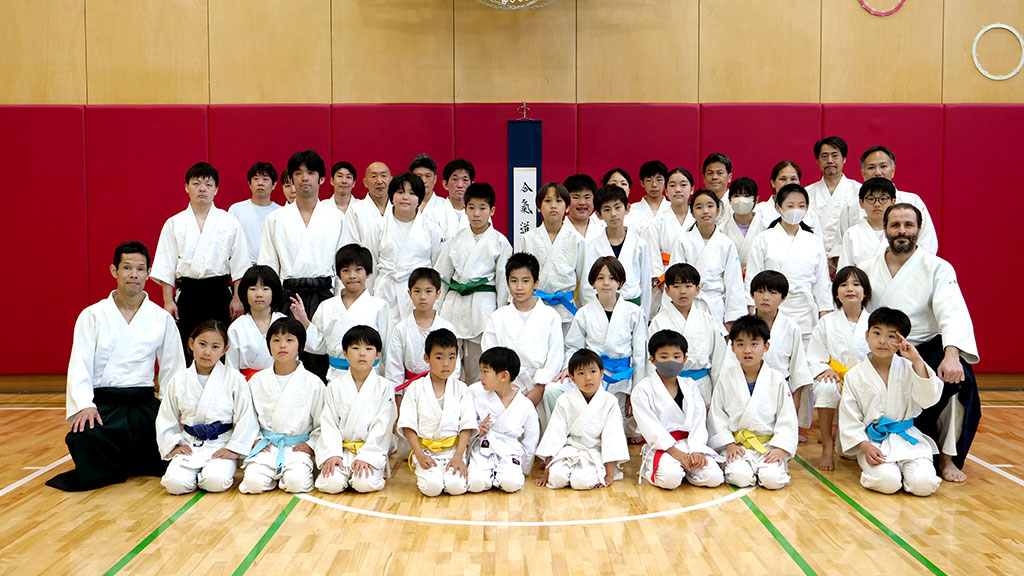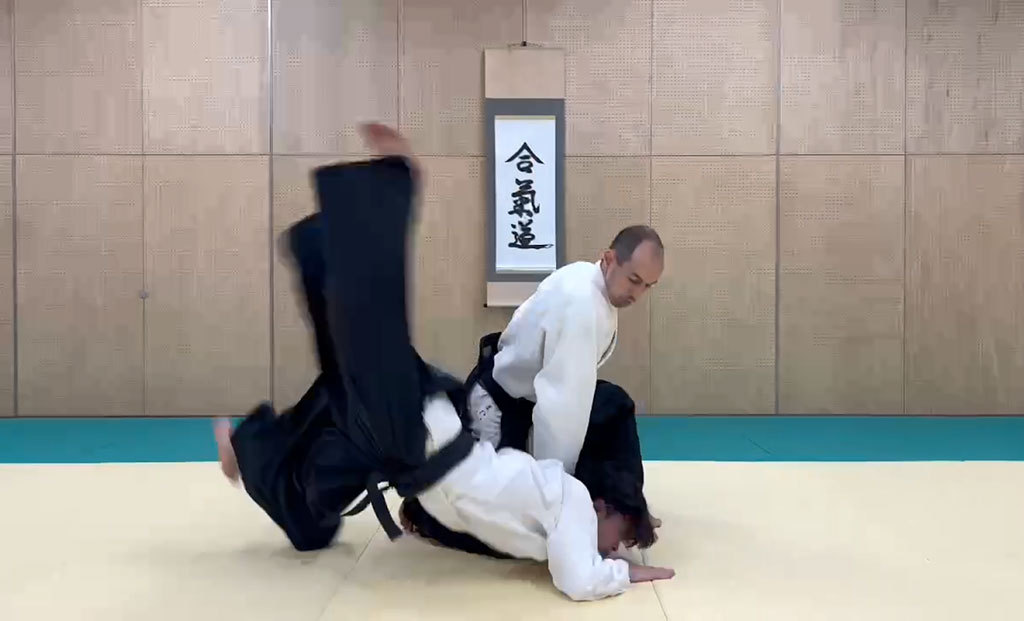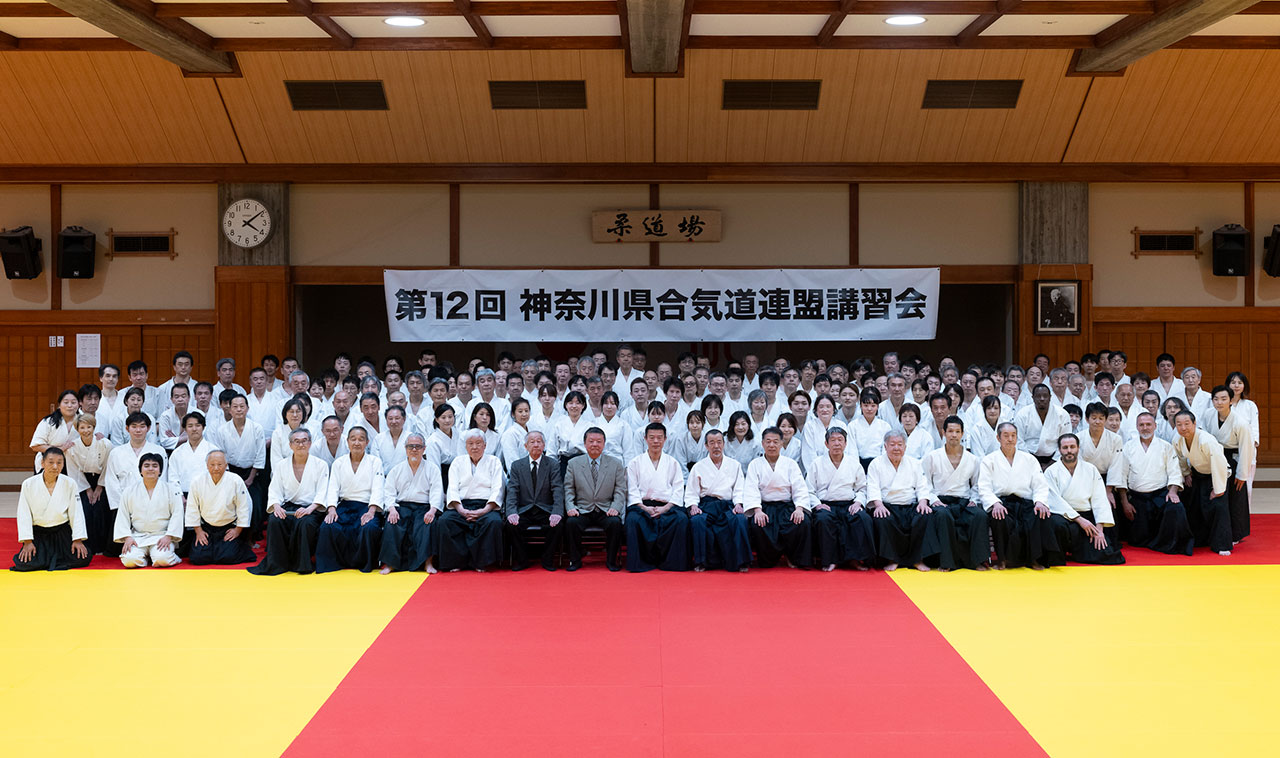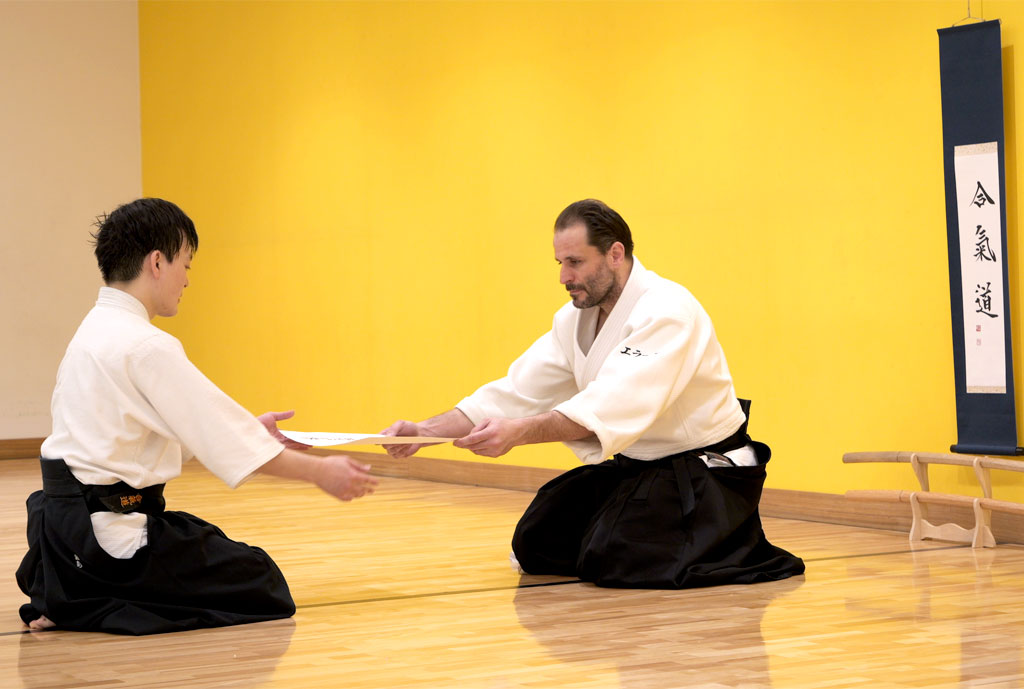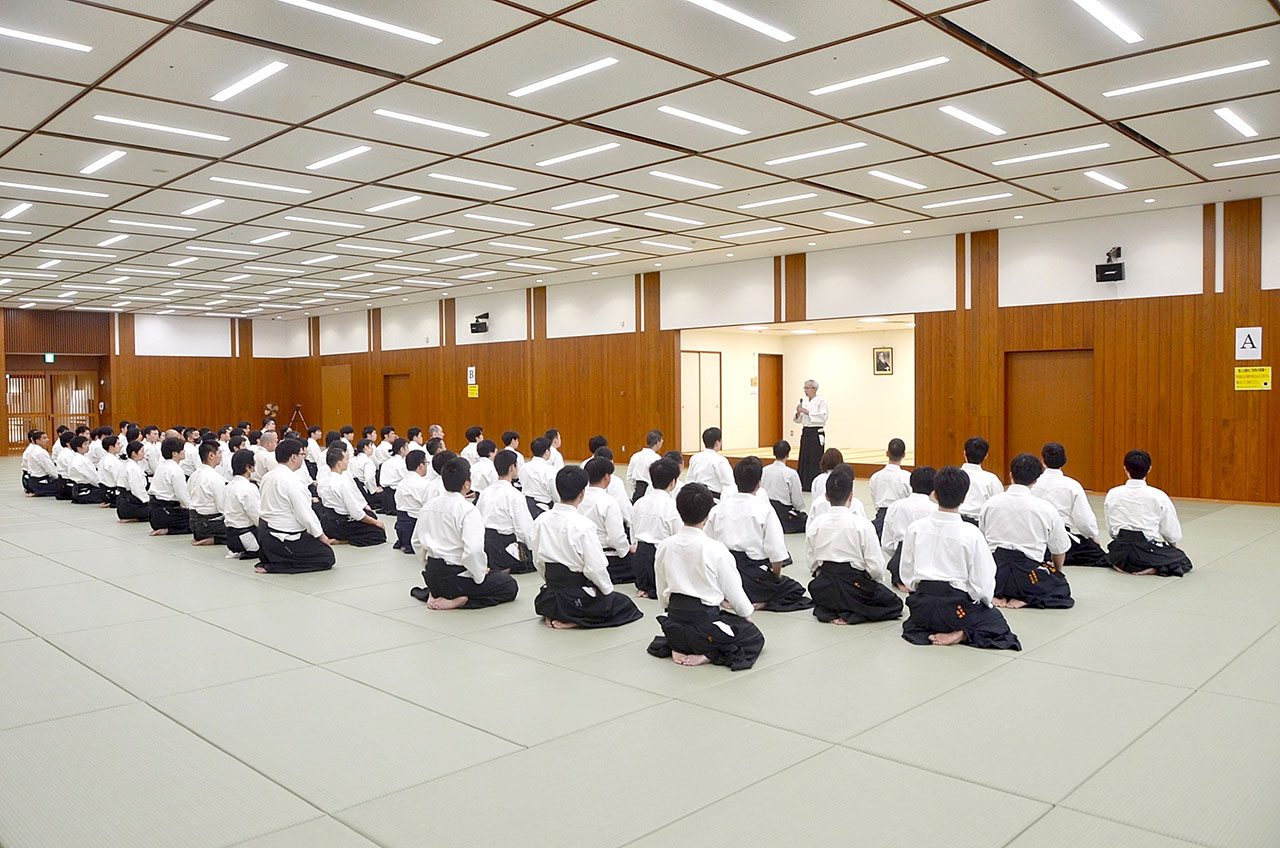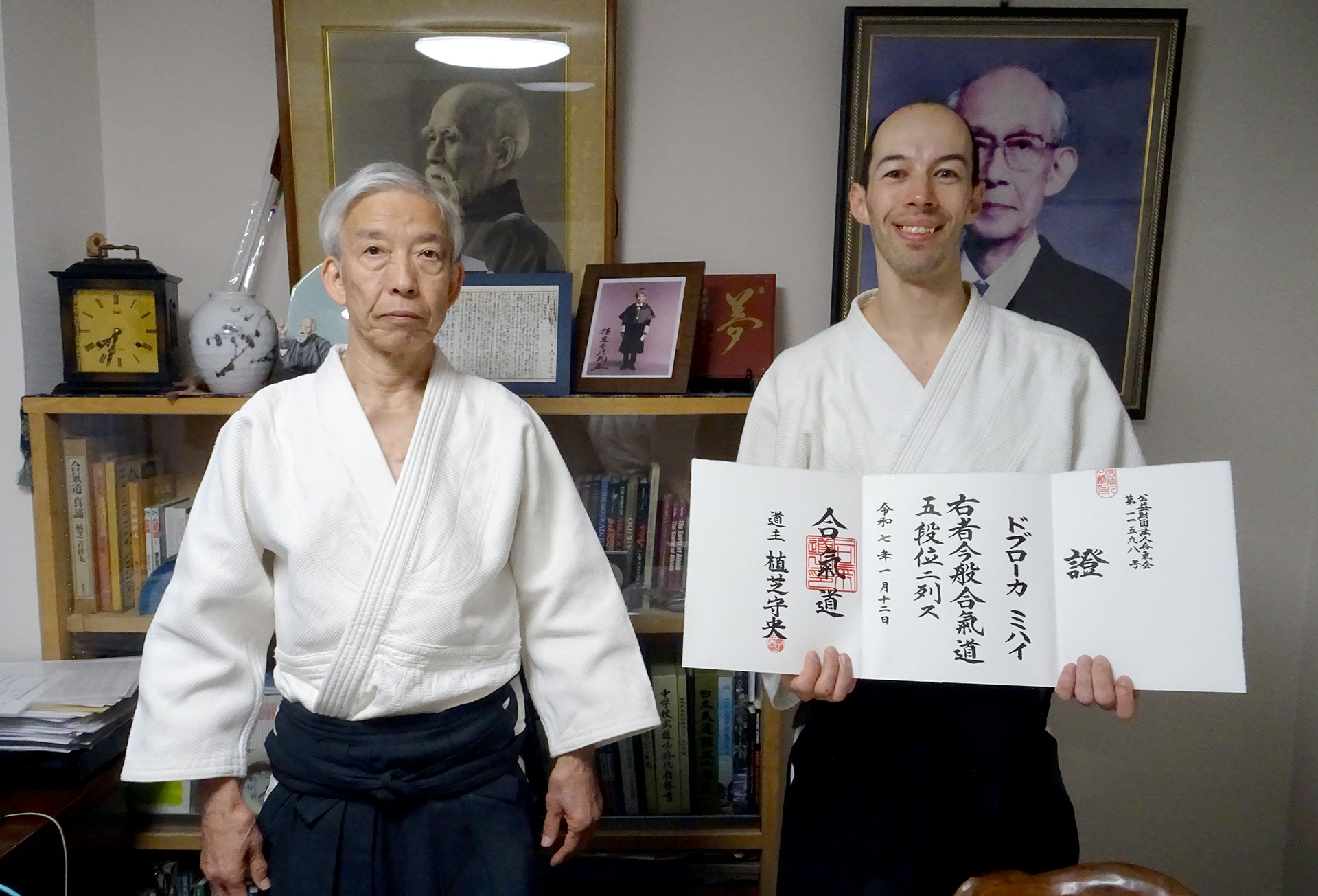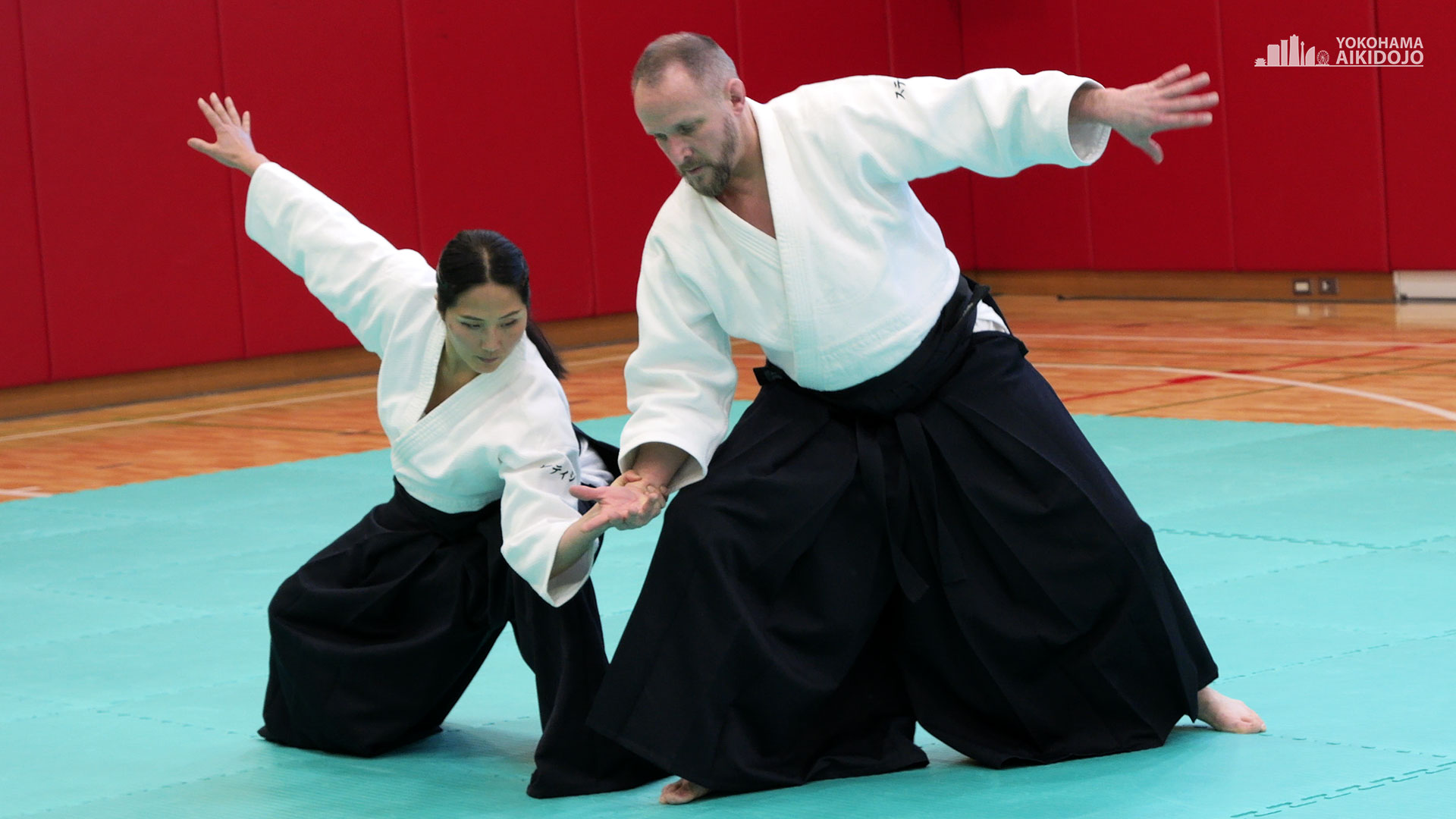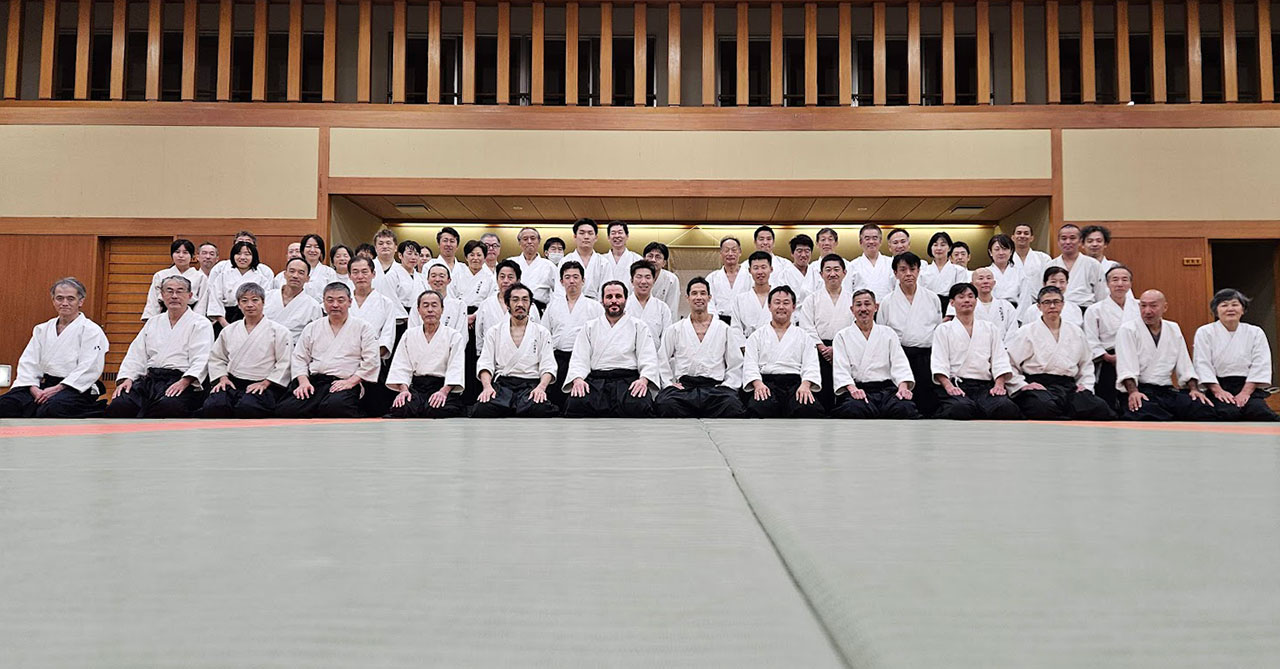On Sunday, July 27th, members of Yokohama AikiDojo proudly took part in the 21st Kanagawa Prefecture Aikido Federation Demonstration, held at the Kanagawa Budokan. This annual event brings together aikidoka from across the prefecture to celebrate their shared practice through formal demonstrations (enbu), highlighting the breadth of aikido expression in Kanagawa.
News
This summer, Guillaume Erard Shihan—6th Dan Aikikai and esteemed instructor of both Aikido and Daito-ryu Aiki-jujutsu—led a remarkable series of seminars across Europe, visiting Emmendingen, Bayonne, Paris, and Cambridge. Central to this tour was a deep exploration of the root techniques preserved in the secret transmission scrolls (densho) and their evolution from the late 19th century to modern practice.
We are pleased to announce that during the Kanagawa Prefecture Aikido Federation Board Meeting held on June 7th, Yokohama AikiDojo Dojo-cho, Guillaume Erard Shihan, was officially elected to the Federation’s Board of Directors.
On Saturday June 14th, the tatami at Yokohama AikiDojo buzzed with anticipation as students from across the Kanagawa region and beyond gathered for a truly special event. Fabrice Croizé Sensei, the renowned French aikido master had traveled from France to share his decades of experience with the Japanese aikido community.
This past Saturday, Yokohama AikiDojo had the pleasure of hosting a special joint class with our friends from Takeda Dojo. The event brought together nearly 50 enthusiastic participants for a wonderful day of Aikido practice, community connection, and seasonal enjoyment.
On Sunday, April 13th, 2025, our instructor, Mihaly Dobroka Shidoin (5th Dan), was invited by Okuyama Daiki Sensei (4th Dan) to teach a special class at his newly established Aikido Kita-Hachioji Dojo. The training was held at Fujimori Sports Center, located near Hachioji Station.
Yokohama AikiDojo participated in the 12th Kanagawa Prefecture Aikido Federation Seminar (第十二回 神奈川県合気道連盟講習会) led by Fujimaki Hiroshi Sensei on Saturday, March 8, at the Kanagawa Prefectural Budokan. This seminar, organized as part of the Kanagawa Prefecture Aikido Federation's official events, brought together practitioners from various dojos to refine their skills and deepen their understanding of Aikido.
As a dojo officially affiliated to the Aikikai Foundation, Aikido Hombu Dojo, Yokohama AikiDojo is permitted to hold kyu and dan grading examinations. Our dojo recently held those examinations for our adult members, and we are delighted to announce that all students passed their test!
Yokohama AikiDojo is pleased to report that our instructors attended the 2025 edition of the Candidate Instructor Seminar (令和6年度指導者候補講習会), organized by the Aikikai Foundation on the 25th and 26th of January, 2025. This seminar plays a crucial role in shaping the future of Aikido instruction by providing hands-on training and lectures on effective teaching methodologies.
The first major event of the year in the Aikido world is the Kagamibiraki, a ceremony that takes place at the Aikikai Foundation - Aikido Hombu Dojo in early January. For this occasion, several hundreds of Aikido practitioners gather to celebrate the new year and greet each other.
Since its inception, our dojo has been fortunate to benefit from the constant support of Christian Tissier Shihan, and we are also very lucky since when his top students visit Japan, they often come to visit us in Yokohama for a special class.
The last event of the year 2024 was the Kanagawa Training Exchange Practice, which took place on Sunday, December 22nd. As always, a group of practitioners from Yokohama AikiDojo attended both the training and the social afterwards.
Sign up for our newsletter
If you would like to receive information about the latest news and upcoming events at Yokohama Aikidojo, please fill in your name and email address and register using this form.
Latest Articles
- Yokohama AikiDojo at the 21st Kanagawa Prefecture Aikido Federation Demonstration 2025-07-28
- Exploring the Roots and Evolution of Aikido: Guillaume Erard’s 2025 European Summer Seminar Tour 2025-07-20
- Guillaume Erard Shihan joins Kanagawa Prefecture Aikido Federation Board of Directors. 2025-07-15
- Fabrice Croizé Sensei's Special Class at Yokohama AikiDojo 2025-06-16
- A Memorable Joint Class with Takeda Dojo and Yokohama AikiDojo 2025-05-04
- Pedagogy and practice expectations at Yokohama AikiDojo 2025-05-01
- The Meaning of Grades in Aikido: A Comprehensive Exploration 2025-04-27
- Aikido Exchange Class at Kita-Hachioji Dojo with Mihaly Dobroka Shidoin 2025-04-15
- Report on the 12th Kanagawa Prefecture Aikido Federation Seminar 2025-03-26
- Congratulations to newly promoted to kyu and dan grades! 2025-03-02
Menu
Training Times
| WEDNESDAY |
| to - Adults & Youths |
| FRIDAY |
| to 16:30 - After School Program 17:00 to 18:00 - Children 18:30 to - Adults & Youths |
| SATURDAY |
| to 11:00 - Children 11:10 to - Adults & Youths |
Yokohama AikiDojo
Officially recognized by the Aikikai Foundation, the World Aikido Headquarters.For all questions and inquiries, please email: yokohamaaikidojo@gmail.com
Sign up for our newsletter
If you would like to receive information about the latest news and upcoming events at Yokohama Aikidojo, please fill in your name and email address and register using this form.








